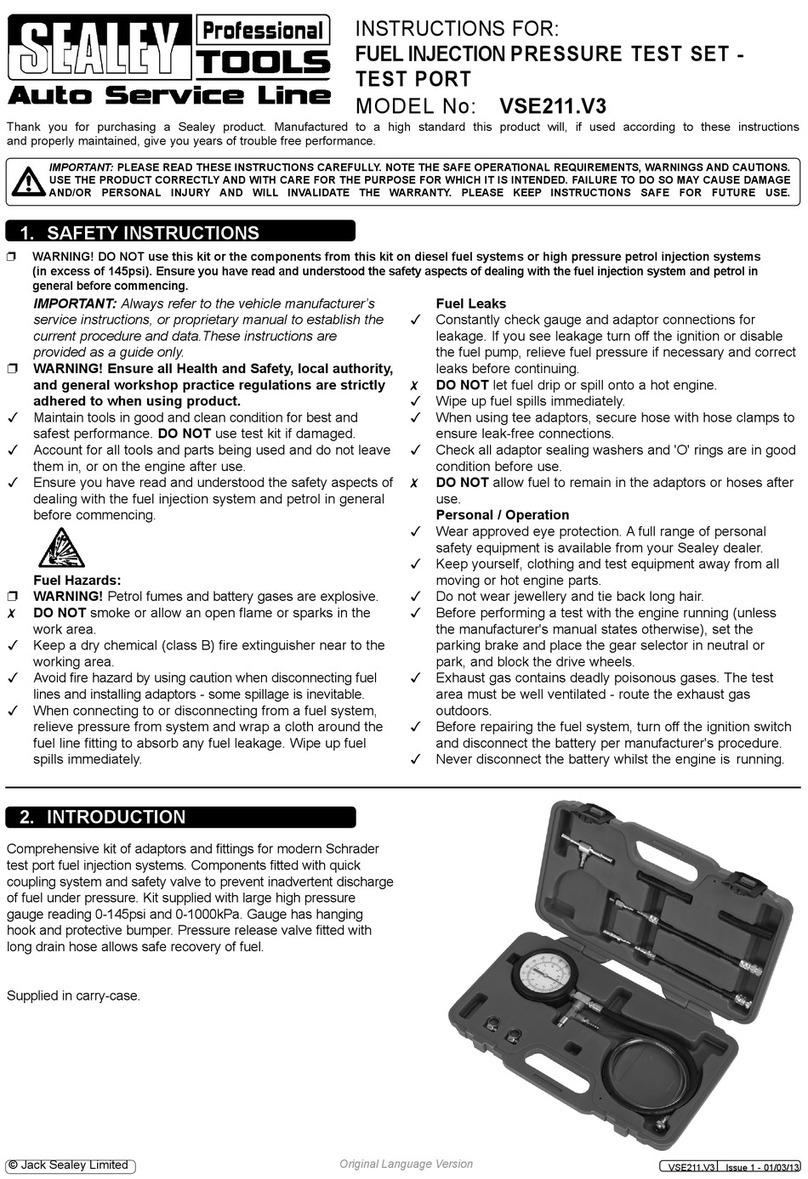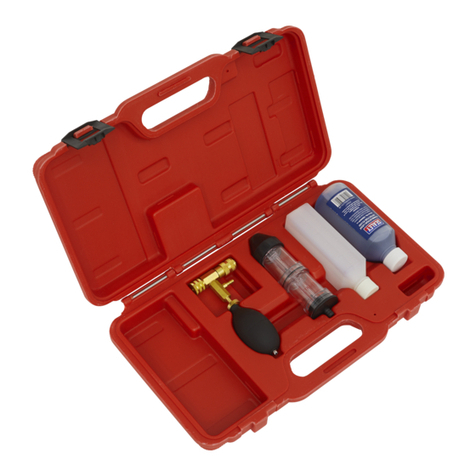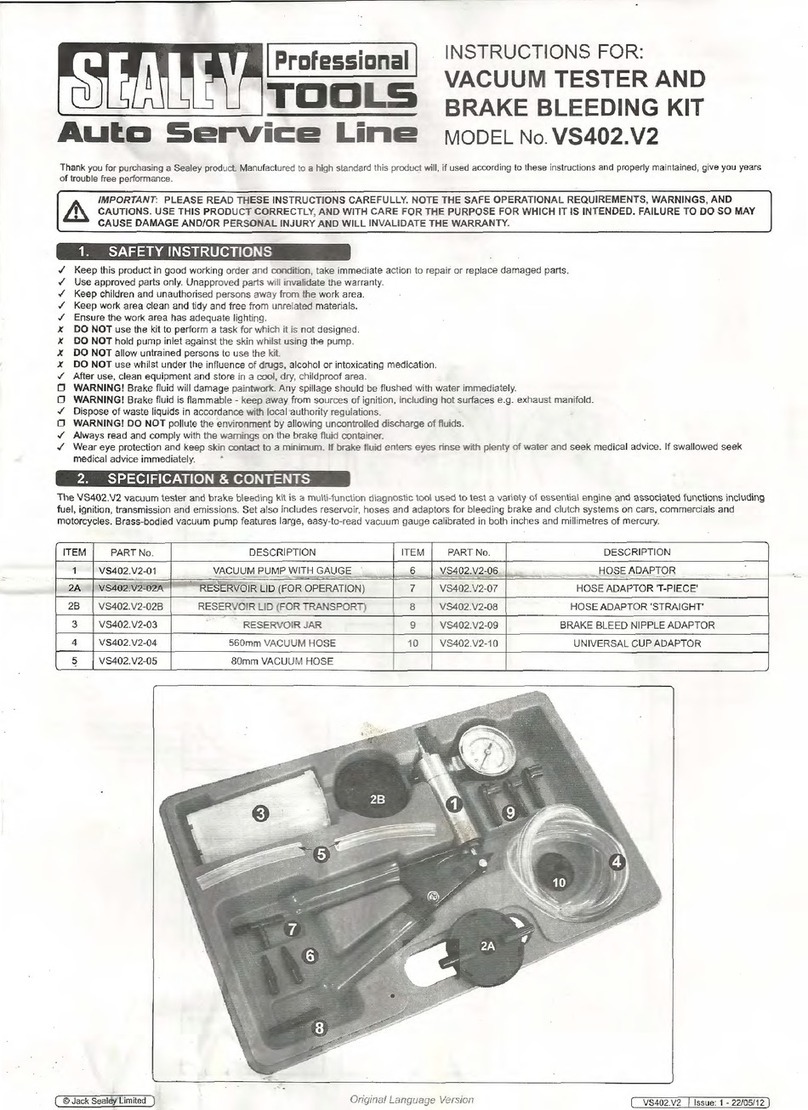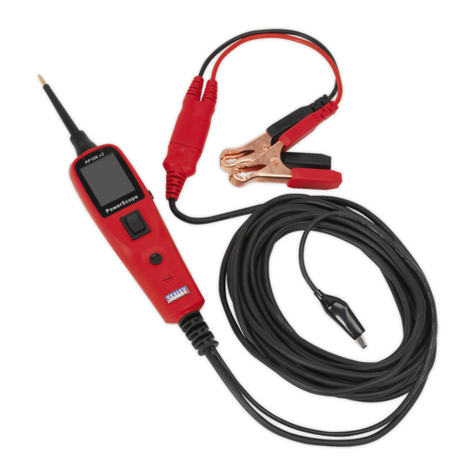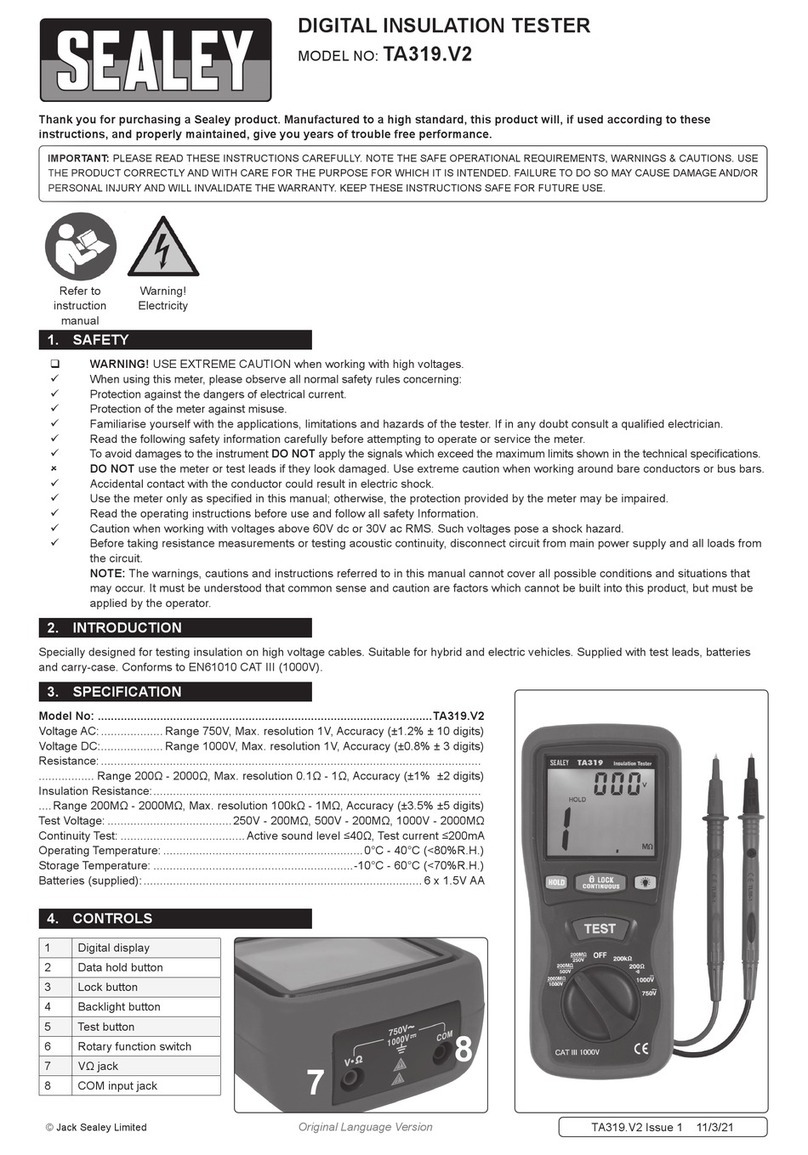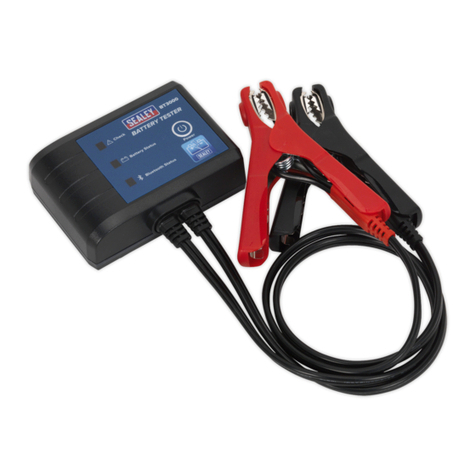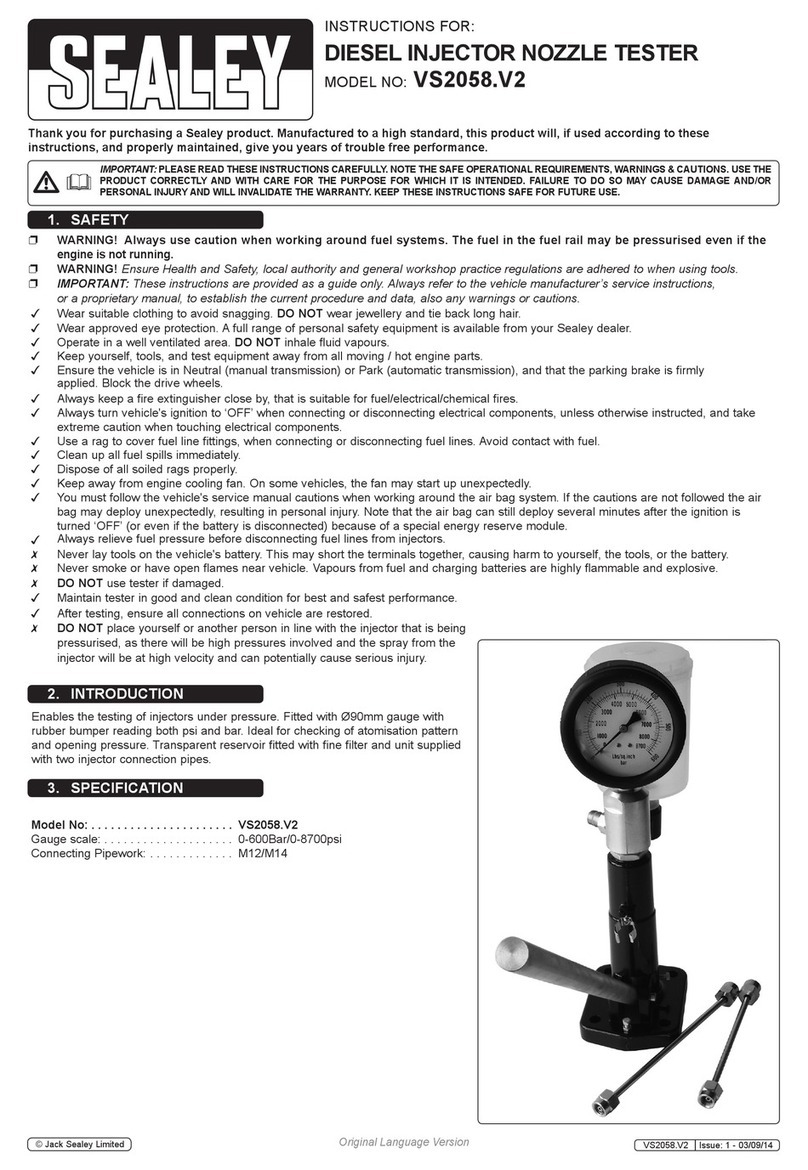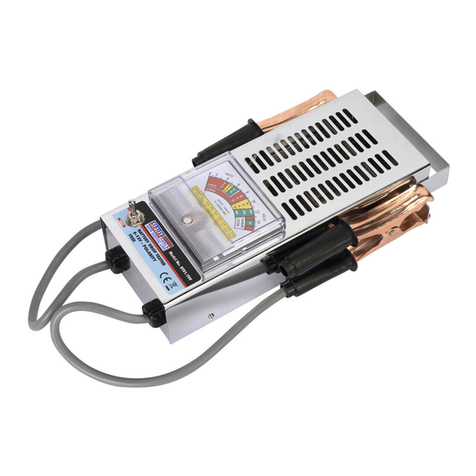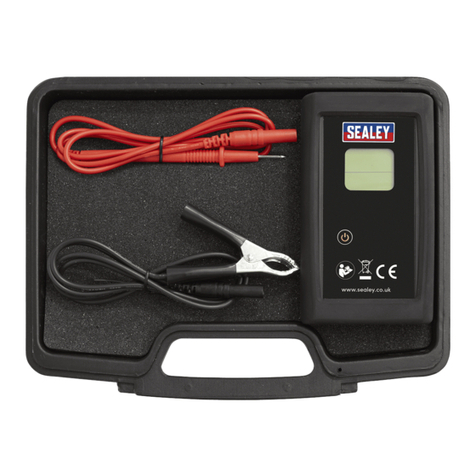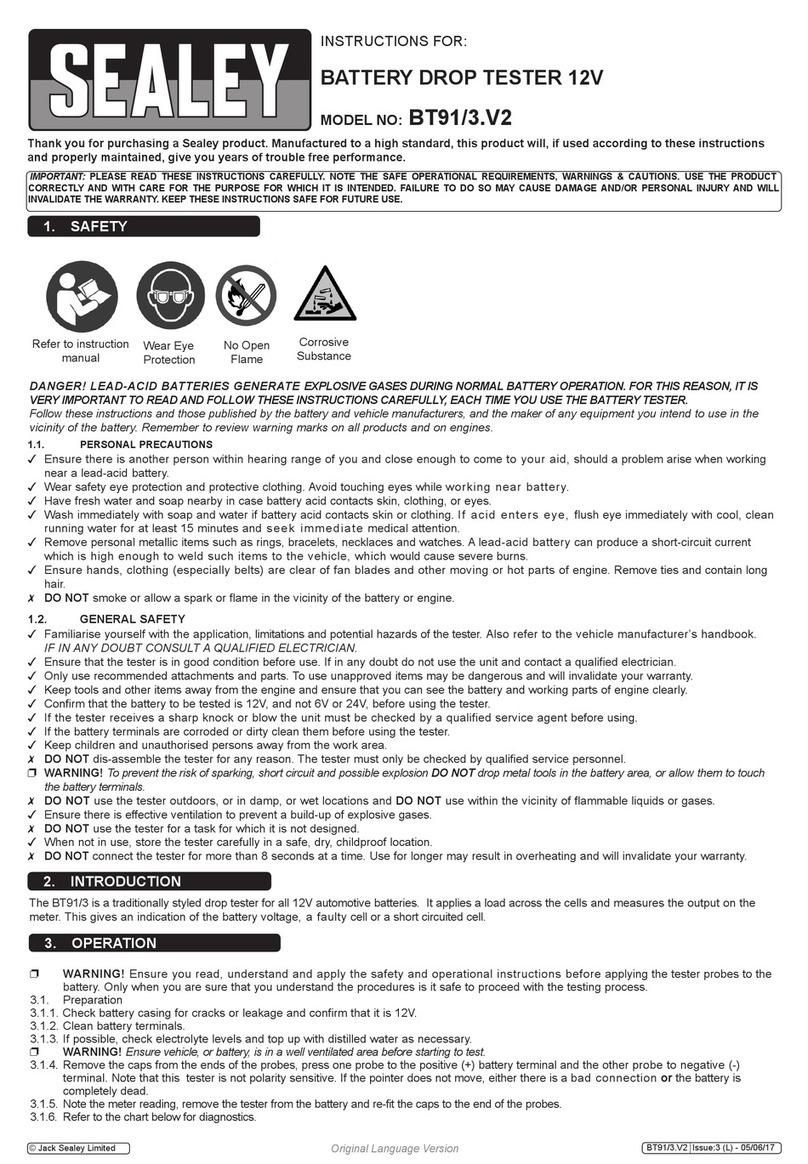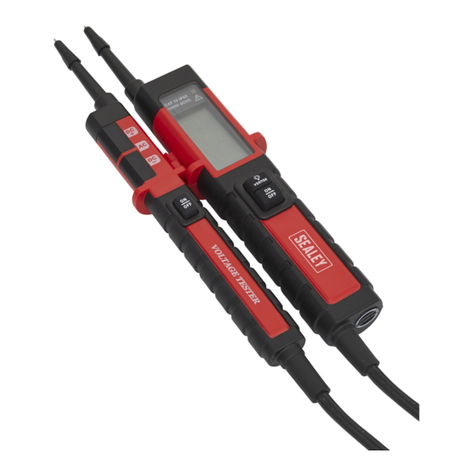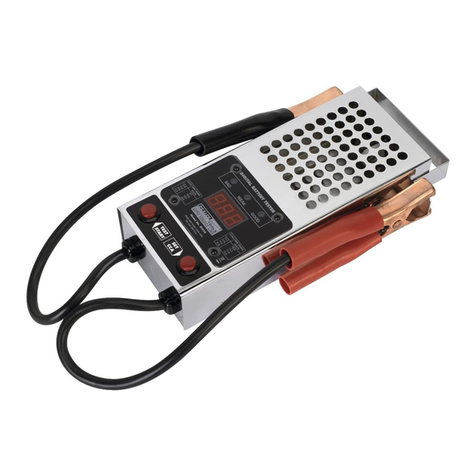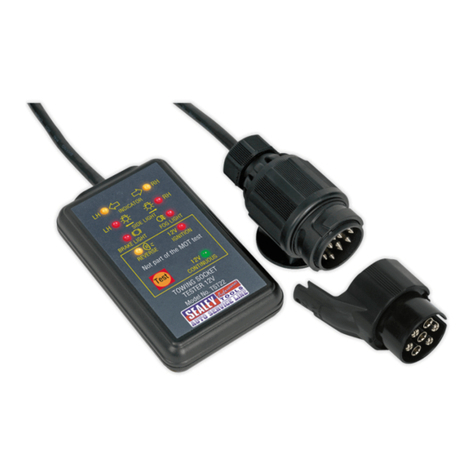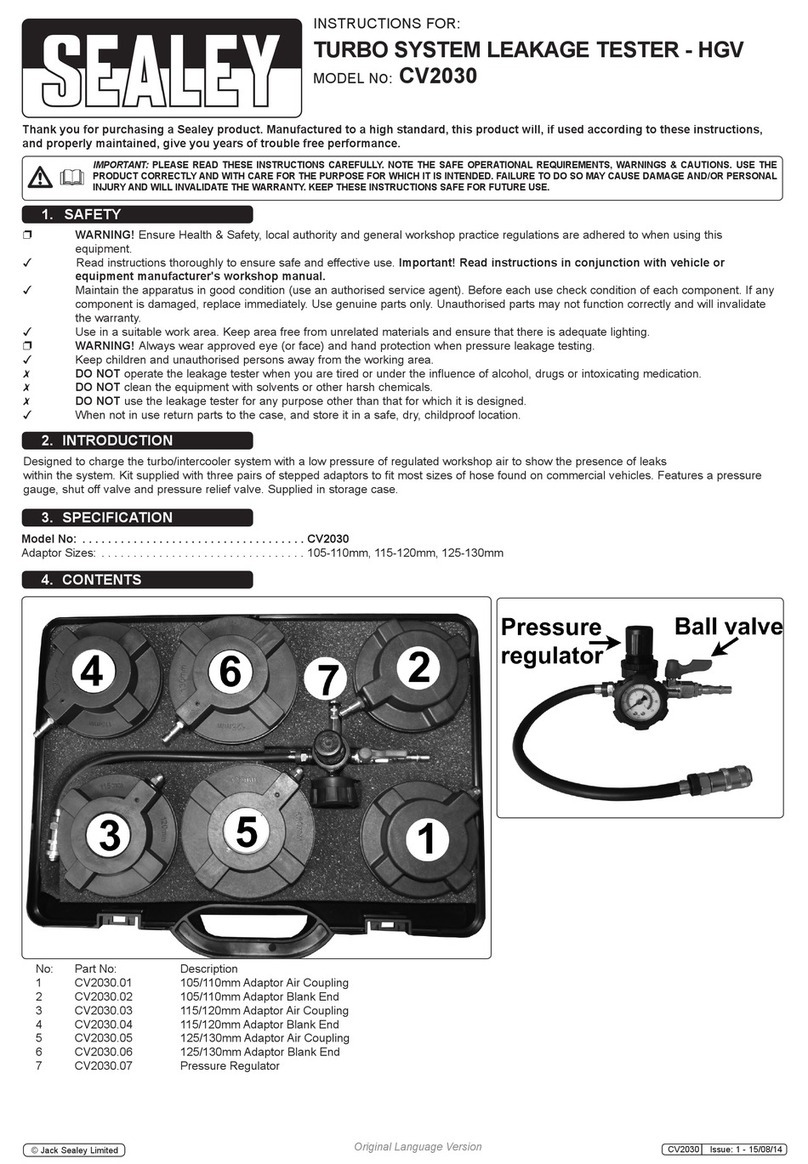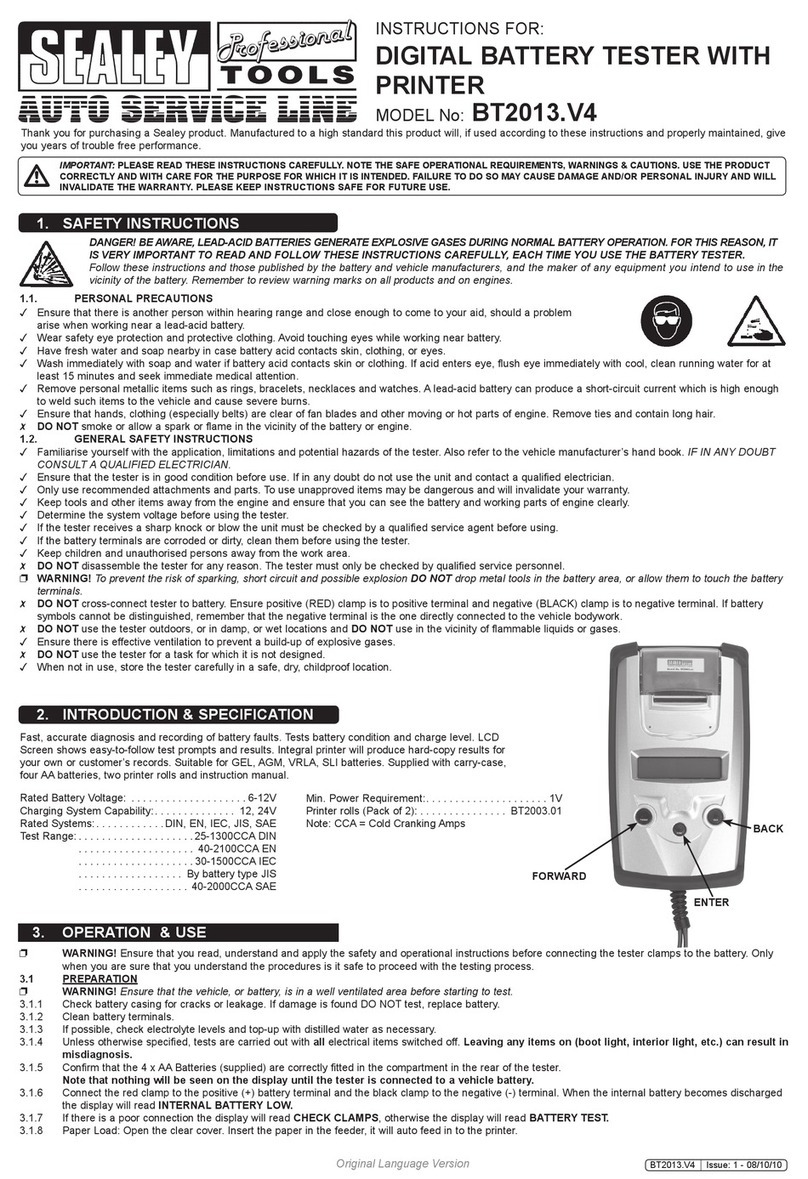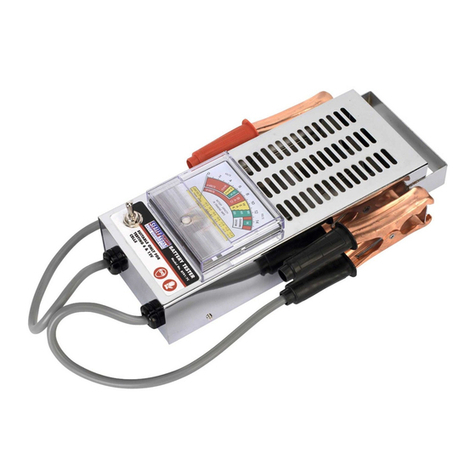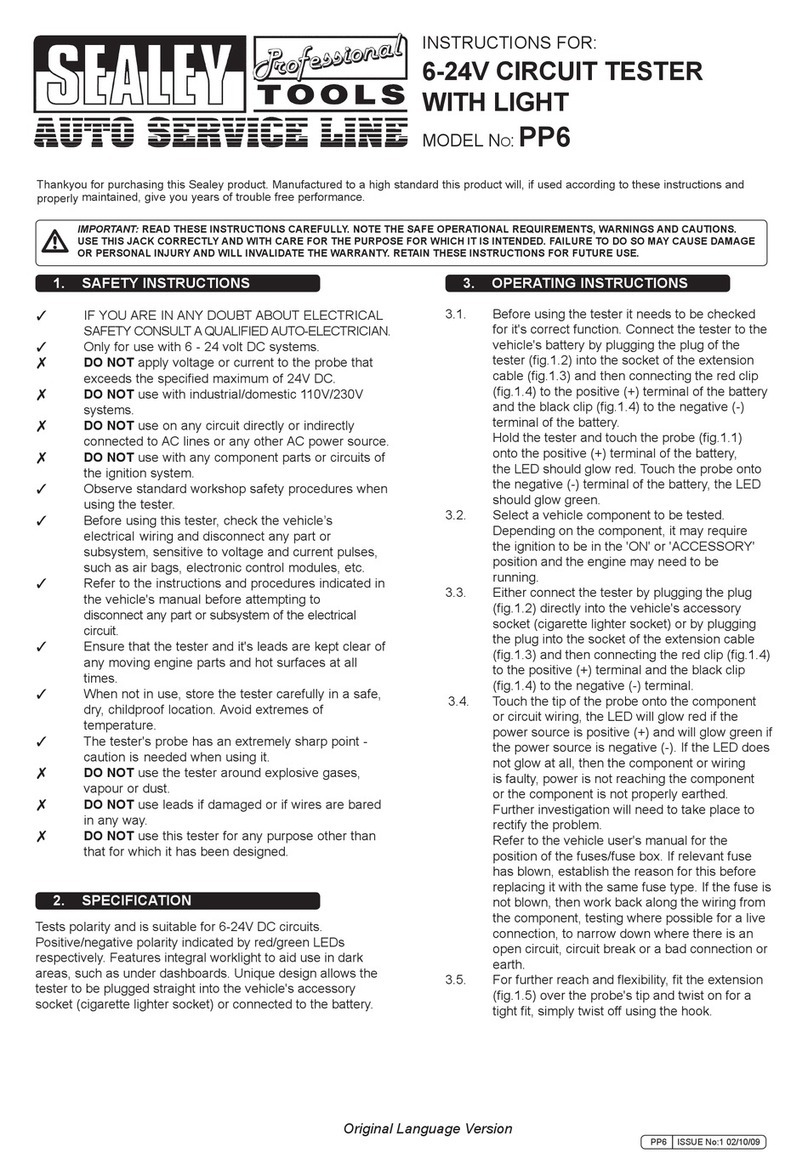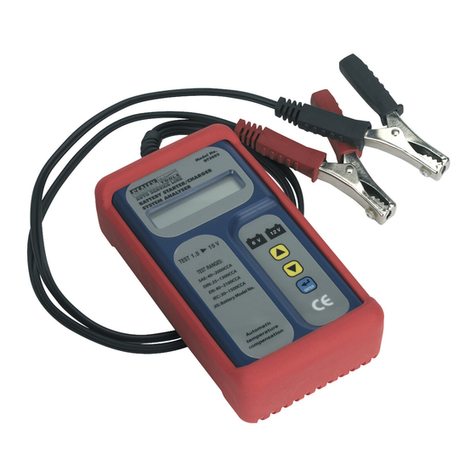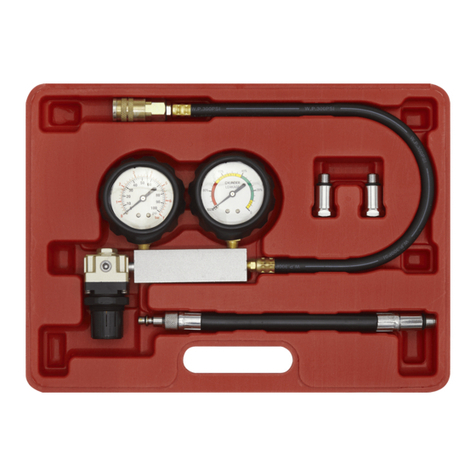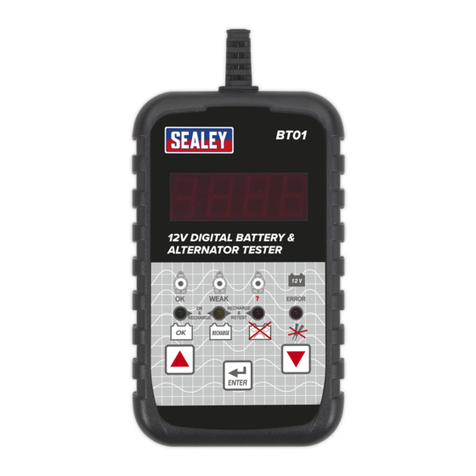1. SAFETY
DANGER! BE AWARE, LEAD-ACID BATTERIES GENERATE EXPLOSIVE GASES DURING NORMAL BATTERY OPERATION. FOR
THIS REASON, IT IS VERY IMPORTANT TO READ AND FOLLOW THESE INSTRUCTIONS CAREFULLY, EACH TIME YOU USE THE
BATTERY TESTER.
Follow these instructions and those published by the battery and vehicle manufacturers, and the maker of any equipment you intend to use in
the vicinity of the battery. Remember to review warning marks on all products and on engines.
1.1. Personal Safety
WARNING! Wear approved eye protection. Wear appropriate Personal Protective Equipment. A full range of Personal Protective
Equipment is available from your Sealey dealer.
9Remove personal metallic items such as rings, bracelets, necklaces and watches. A lead-acid battery can produce a short-circuit
current high enough to melt or weld a ring, which would cause severe burns.
9Ensure that hands and clothing are clear of fan blades and other moving or hot engine parts. Remove ties and ensure that belts
cannot become entangled.
9Ensure that there is another person within hearing distance and is able to come to your aid should a problem arise when working
near a lead-acid battery.
9 Havefreshwaternearbyincasebatteryacidcontactsskinorclothing;ushaffectedareaimmediately.Ifacidenterseyes,ush
immediately with clean running water for a minimum of 15 minutes, seek medical attention.
8DO NOTsmokeorallowasparkorameinthevicinityofthebatteryorengine.
1.2. General Safety
9Familiarise yourself with the application, limitations and potential hazards of the tester. Also refer to the vehicle manufacturer’s hand
book. IF IN ANY DOUBT CONSULT A QUALIFIED ELECTRICIAN.
9 Ensurethatthetesterisingoodconditionbeforeuse.Ifinanydoubtdonotusetheunitandcontactaqualiedelectrician.
9Only use recommended attachments and parts. To use unapproved items may be dangerous and will invalidate your warranty.
9Keep tools and other items away from the engine and ensure that you can see the battery and working parts of engine clearly.
9Determine the system voltage before using the tester.
9 Ifthetesterreceivesasharpknockorblowtheunitmustbecheckedbyaqualiedserviceagentbeforeusing.
9Clean battery terminals before using the tester.
9Keep children and unauthorised persons away from the work area.
8DO NOTdisassemblethetesterforanyreason.Thetestermustonlybecheckedbyqualiedservicepersonnel.
WARNING! To prevent the risk of sparking, short circuit and possible explosion DO NOT drop metal tools in the battery area, or allow
them to touch the battery terminals.
8DO NOT cross-connect tester to battery. Ensure positive (RED) clamp is to positive terminal and negative (black) clamp is to
negative terminal. If battery symbols cannot be distinguished, remember that the negative terminal is the one directly connected to
the vehicle bodywork.
8DO NOT use the tester outdoors, or in damp, or wet locations and DO NOTuseinthevicinityofammableliquidsorgases.
8Ensure there is effective ventilation to prevent a build-up of explosive gases.
8DO NOT use the tester for a task for which it is not designed.
When not in use, store the tester carefully in a safe, dry, childproof location.
9 Modernvehiclescontainextensiveelectronicsystems.YouarerequiredtocheckwiththevehicleManufacturer,foranyspecic
instructions regarding the use of this type of equipment on each vehicle.
2. INTRODUCTION
Compact device which accurately tests battery, cranking and alternator. No heat, no sparks and no misdiagnosis. Just key in the battery rating
from the top of the battery and results are displayed on the LCD screen. Includes a facility to print results via PC. No internal battery and will test
batteries with a residual charge of just 8V. Supplied with PC software and instruction manual in storage pouch.
BT105 | Issue:1 09/05/16
Original Language Version
© Jack Sealey Limited
Refer to
Instruction
Manual
Wear eye
Protection
Wear
Protective
Clothing
Wear
Protective
Gloves
Explosive
Material
Corrosive
Substance
